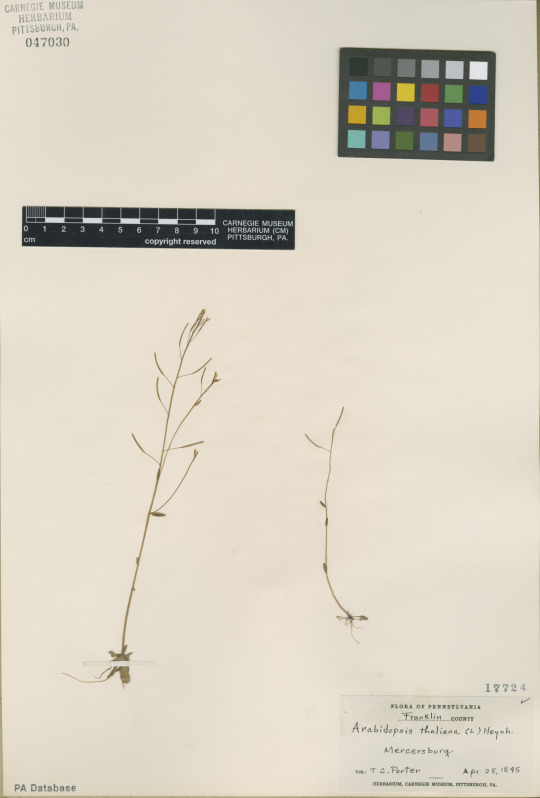
Collected on April 28, 1845, this specimen was found in Mercersburg, Pennsylvania (Franklin County) by Thomas Conrad Porter. Porter (1822-1901) was a botanist associated with the herbarium at what is now the Academy of Natural Sciences of Drexel University in Philadelphia.
This plant might not seem like anything to write home about, but it is well known by most scientists. Arabidopsis thaliana (mouse-ear cress) has played, and continues to play, a huge role in plant biology research. This weed in the mustard family (Brassicaceae) is native to Europe and Asia and has been widely introduced to the United States.
Because of its small genome (fully sequenced 16 years ago), rapid life cycle (Germination to reproducing adult takes only six weeks!), mutant genotypes, and a long history of genetic research, this species has become an important model organism for cellular, molecular, evolutionary, agricultural, and even ecological studies. It is the international “lab rat” for plant science.
It was discovered in Germany in the 1500s, but did not really become famous as a model organism for research until 1943—nearly 100 years after this specimen was collected!
Botanists at Carnegie Museum of Natural History share pieces of the herbarium’s historical hidden collection on the dates they were discovered or collected. Check back for more!
